TEKS Art 5
(1) The fine arts incorporate the study of dance, music, theatre, and the visual arts to offer unique experiences and empower students to explore realities, relationships, and ideas. These disciplines engage and motivate all students through active learning, critical thinking, and innovative problem solving. The fine arts develop cognitive functioning and increase student academic achievement, higher-order thinking, communication, and collaboration skills, making the fine arts applicable to college readiness, career opportunities, workplace environments, social skills, and everyday life. Students develop aesthetic and cultural awareness through exploration, leading to creative expression. Creativity, encouraged through the study of the fine arts, is essential to nurture and develop the whole child.
(2) Four basic strands--foundations: observation and perception; creative expression; historical and cultural relevance; and critical evaluation and response--provide broad, unifying structures for organizing the knowledge and skills students are expected to acquire. Each strand is of equal value and may be presented in any order throughout the year. Students rely on personal observations and perceptions, which are developed through increasing visual literacy and sensitivity to surroundings, communities, memories, imaginings, and life experiences, as sources for thinking about, planning, and creating original artworks. Students communicate their thoughts and ideas with innovation and creativity. Through art, students challenge their imaginations, foster critical thinking, collaborate with others, and build reflective skills. While exercising meaningful problem-solving skills, students develop the lifelong ability to make informed judgments.
(3) Statements that contain the word "including" reference content that must be mastered, while those containing the phrase "such as" are intended as possible illustrative examples.
- Free Plan
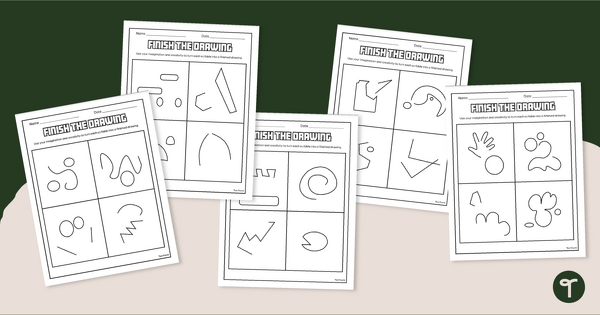
Finish the Drawing - Worksheets
Get creative and finish the drawings with a set of five art worksheets.
- Free Plan
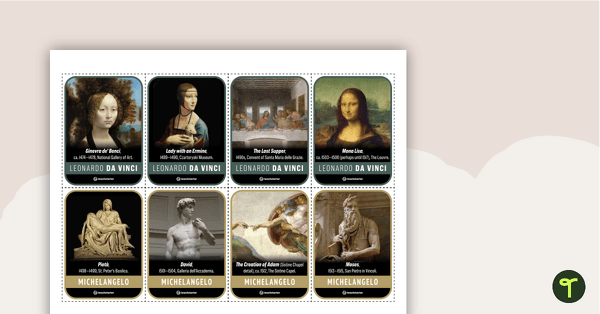
Famous Artists Card Game for Kids
A set of 54 famous artist cards to be used for a variety of card games.
- Free Plan
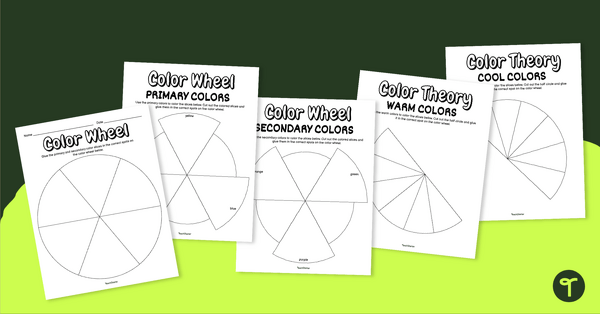
Primary, Secondary, Warm, and Cool Color Worksheets
Teach about primary, secondary, warm and cool colors with this worksheet pack.
- Free Plan
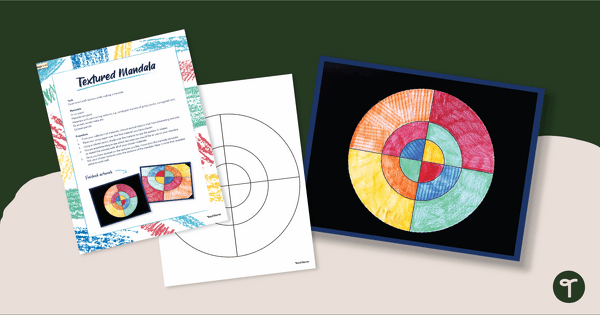
International Dot Day Textured Mandala Template
Celebrate International Dot Day in style with a printable Dot Day Textured Mandala Template.
- Free Plan
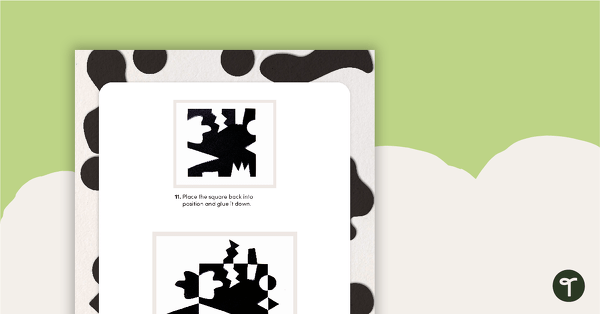
Balancing Act Activity
A fun art activity to explore positive and negative space.
- Free Plan
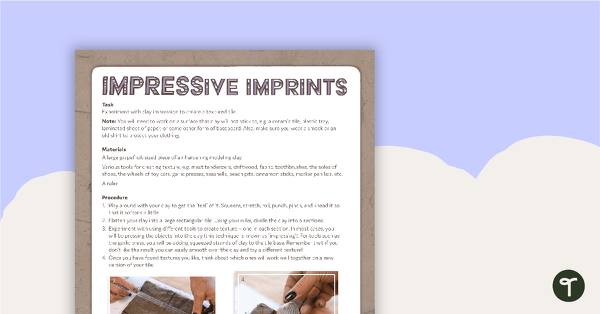
IMPRESSive Imprints Activity
A fun art activity to explore texture.
- Plus Plan
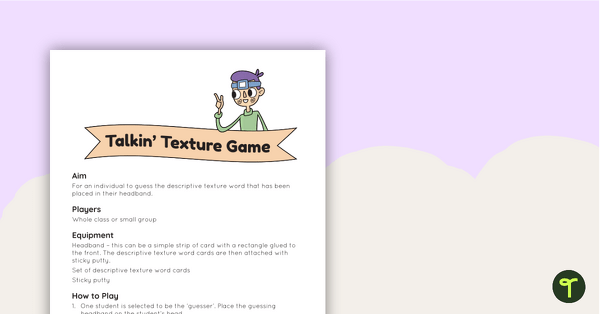
Talkin' Texture Game
A fun game to play when learning about texture.
- Plus Plan
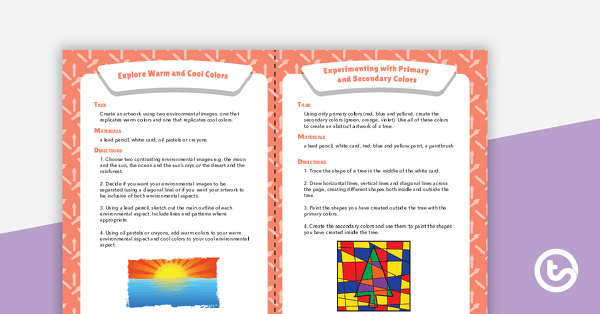
Visual Art Elements Activity Task Cards
A set of 28 art activities that explore each of the art elements.
- Plus Plan
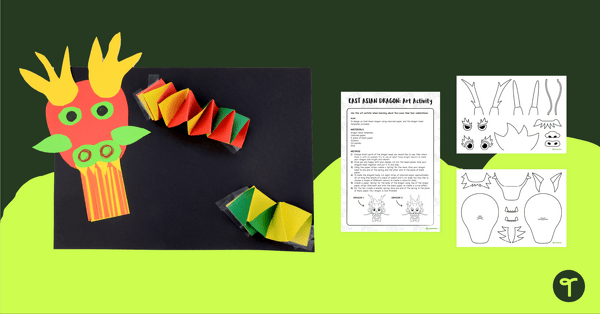
Chinese Dragon Art Activity for Kids
Print a creative Chinese dragon art activity for kids to celebrate Lunar New Year in the classroom.
- Plus Plan
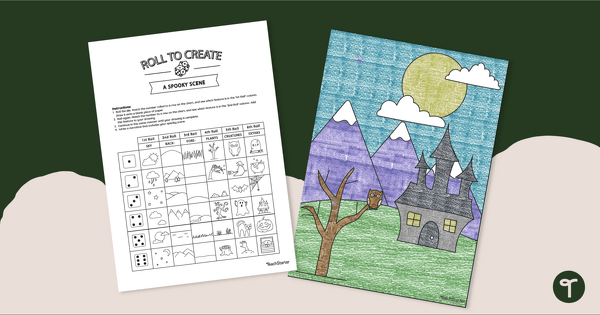
Roll to Create a Spooky Halloween Scene
Create a spooky scene to include in a narrative text using a die and a chart with this fun, hands-on Halloween activity.
- Plus Plan
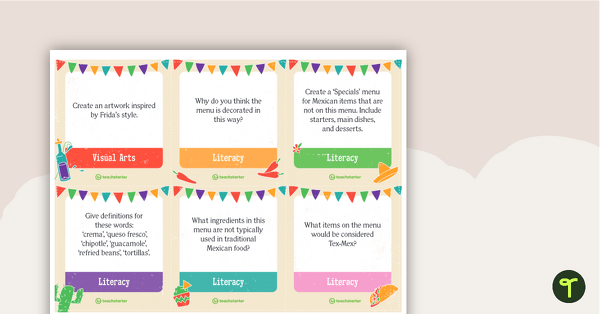
Frida's Fiesta Stimulus – Task Cards
39 activity task cards based on the Frida's Fiesta Restaurant menu which is included.
- Free Plan
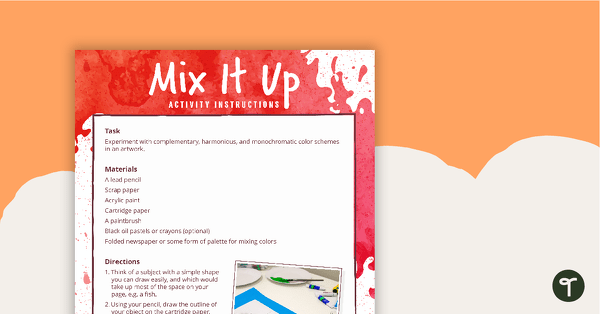
Mix It Up Activity
A fun art activity to experiment with the use of specific color schemes.
- Plus Plan
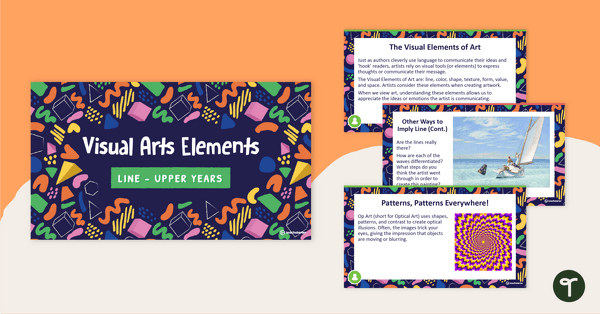
Visual Arts Elements Line PowerPoint - Upper Years
A 28-slide teaching presentation to use when investigating line in Visual Art.
- Plus Plan
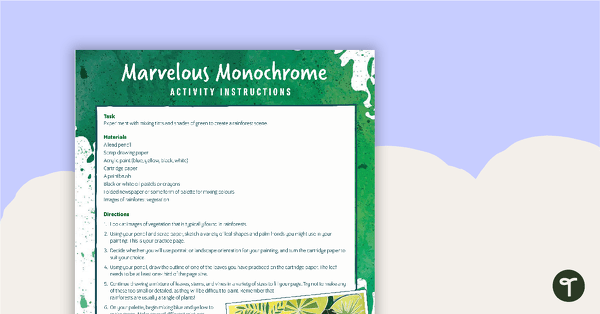
Marvelous Monochrome Activity
A fun art activity to experiment with the use of monochromatic color.
- Free Plan
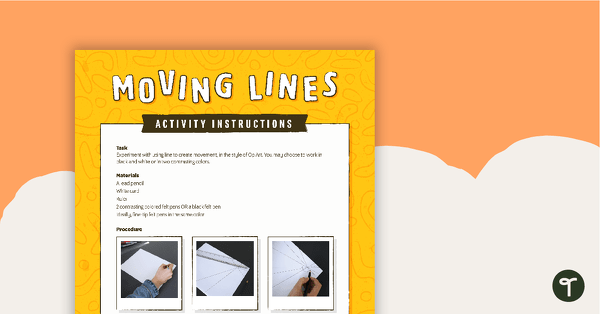
Moving Lines Activity
A fun art activity to experiment with the use of line.
- Plus Plan
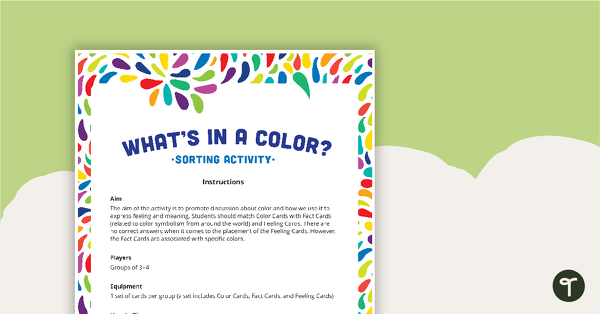
What's in a Color? Sorting Activity
A fun sorting activity for students to explore interpretation of color in visual art.
- Plus Plan
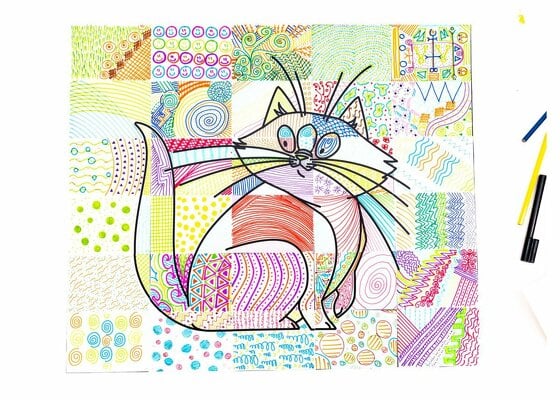
Pattern to Picture Activity
A fun art activity to experiment with the use of line and pattern.
- Plus Plan
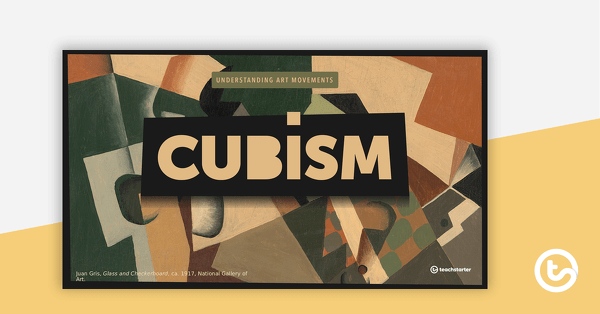
Artistic Movements Teaching Presentation – Cubism
A 44-slide editable PowerPoint template exploring the famous artists and signature artistic techniques of the Cubist movement.
- Plus Plan

Visual Arts Elements Space PowerPoint - Upper Years
A 28-slide teaching presentation to use when investigating space in Visual Art.
- Plus Plan
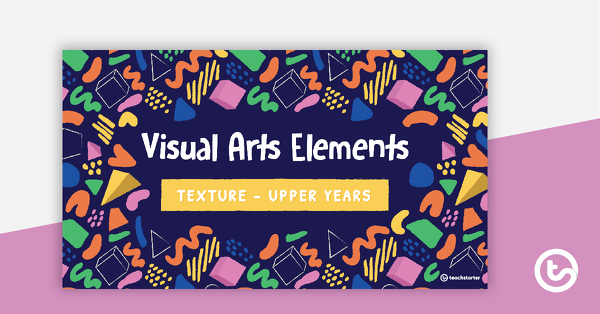
Visual Arts Elements Texture PowerPoint - Upper Years
A 26-slide teaching presentation to use when investigating texture in Visual Art.
- Plus Plan
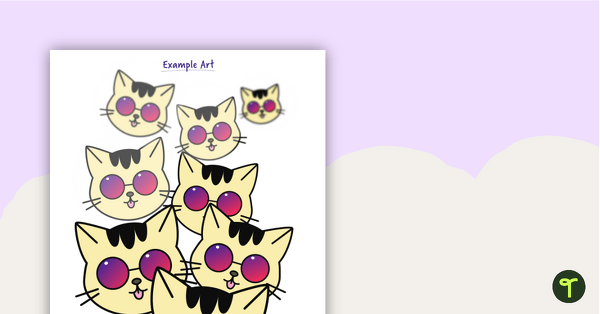
Designing for Depth Drawing Templates
A fun art activity to explore the creation of depth in two-dimensional work.
- Plus Plan
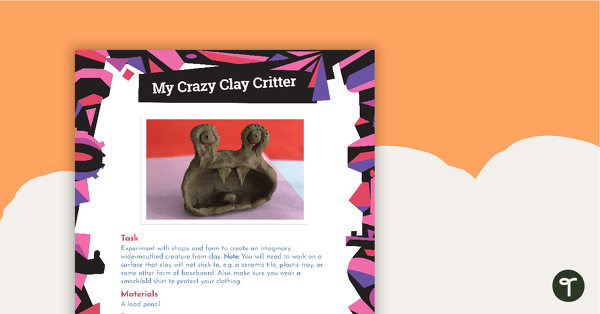
My Crazy Clay Critter Activity
A fun art activity to explore shape and form in a three-dimensional work.
- Plus Plan
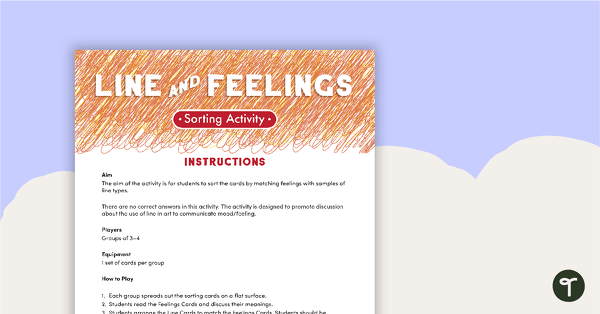
Line and Feelings Sorting Activity - Upper Elementary
A fun sorting activity for students to explore interpretation of line in visual art.
- Plus Plan
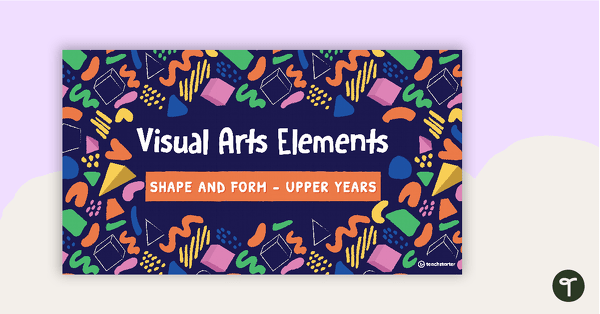
Visual Arts Elements Shape and Form PowerPoint - Upper Years
A 25-slide teaching presentation to use when investigating shape and form in Visual Art.
- Plus Plan
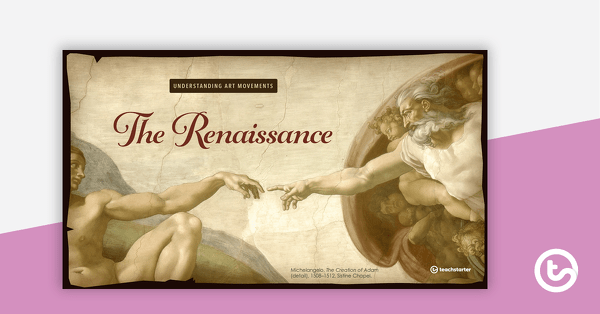
Artistic Movements PowerPoint – The Renaissance
A 48-slide editable PowerPoint template exploring the famous artists and signature artistic techniques of the Renaissance.
- Free Plan
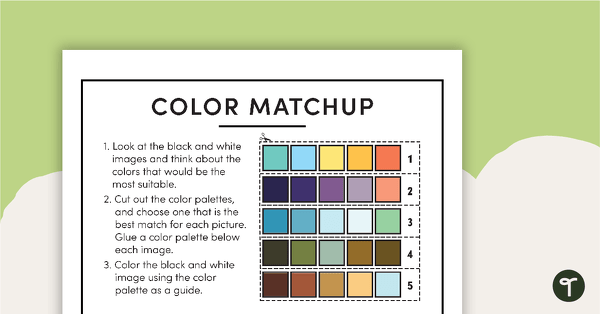
Color Matchup – Worksheet
An activity for students to match colors with black and white settings.
- Free Plan
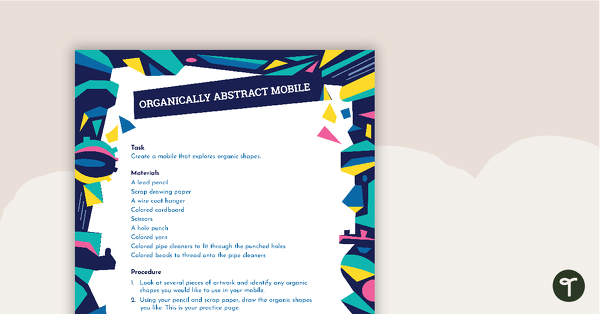
Organically Abstract Mobile Activity
A fun art activity to explore organic shape.
- Plus Plan
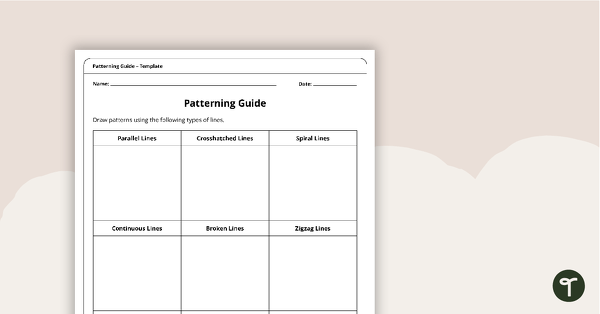
Patterning Guide Template
A template to use when learning about line in visual art.
- Plus Plan
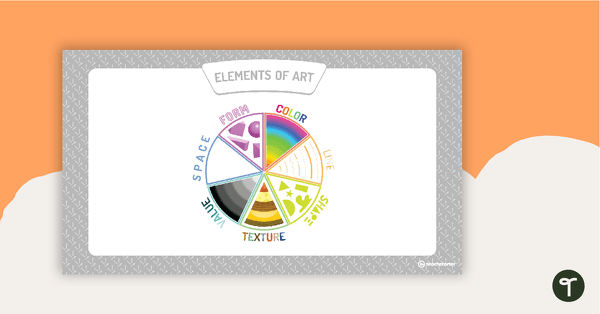
Visual Art Elements PowerPoint Presentation
A PowerPoint including eight slides explaining the different visual art elements.
- Plus Plan
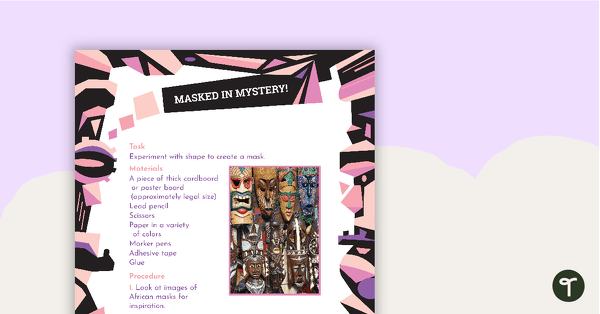
Masked in Mystery Activity
A fun art activity to explore shape through the creation of a mask.
- Plus Plan
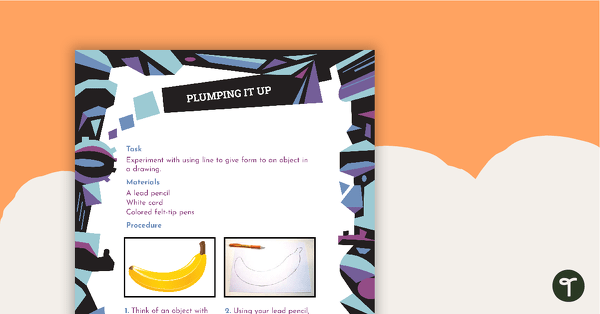
Plumping It Up Activity
A fun art activity to explore form in a two-dimensional work.
- Plus Plan

Organic Shape Search Worksheet
A fun art activity to explore organic shape.